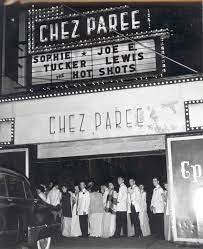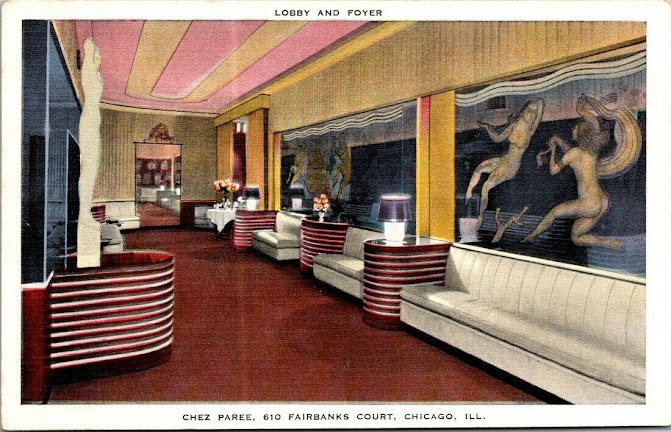TERRIBLE CALAMITY. So screamed the headline of the Chicago Tribune on November 9, 1861.
The Globe was one of the oldest of our lake craft in commission. She came from the stocks as a side-wheel steamboat in 1848. Subsequently, she was altered to a propeller. Her present engines were comparatively new, having taken the place of the old ones, which were condemned about four years prior. She was registered as a B-2 vessel, with a valuation of $17,000 ($538,600 today). She was insured for $5,000, but as marine policies do not cover loss or damage by an explosion, the loss fell entirely upon her owner, Mr. William O. Brown, of Buffalo, N.Y. She was commanded by Captain Amos Pratt, one of the oldest and best of lake navigators.
The steamship Globe, tied up at a Wells Street dock on the Northside of the main branch of the Chicago River that the disaster claimed the lives of 15 people. Captain Pratt had left the boat at about 7:30 am, about two hours before the explosion. His belief was that after the boat docked, water was drawn down in one of the boilers while the other boiler was kept at low pressure for moving the boat and hoisting freight.
On the morning of Thursday, November 8, about nine o'clock, the people in the vicinity of Clark and Wells streets were startled by a tremendous explosion upon the Northside of the river, and at the same instant, the air was filled with a shower of beams, iron, and splinters of every description. Captain Pratt, was found unconscious, lying at Hale's dock along with the remains of the propeller from the Globe.
 |
| Terrible Explosion of the Steamer Globe, at Hall's Dock, Chicago, Thursday, November 8, 1961. Sketch by H. Petrie. |
The tremendous sound of the explosion reverberated for miles. People rushed to the docks to witness the spectacle. The ship, torn apart for two-thirds of her length, sank almost immediately with about 20 feet of her upper works still visible. It was immediately clear that the death toll would be large.
The Globe had only arrived about five hours earlier that morning from Buffalo, N.Y. with a cargo of apples and other merchandise. She had also brought some passengers, all of whom had left the vessel. The engineers and firemen were in the engine room inspecting a cylinder head. The steam had been blown off from one of the boilers and the fire put out, the other boiler had but little steam in it. While they were thus occupied, the boiler exploded with terrific force, tearing the propeller into atoms, and covering the adjacent parts with the wreck of the ill-fated vessel. The crew numbered twenty-five in all and it is feared that most of them have perished. The force of the shock was terrible. The long block of buildings adjoining the Northside of the river was shaken as if by an earthquake. The windows were all broken and some ceilings were destroyed.
 |
| The wreck of the steamer as it appeared after the explosion. Carrying away the dead bodies. Sketch by T. Williams. |
Some idea may be formed of the wonderful power concealed in a drop of water from some of the particular effects of the explosion. The iron of the boilers was ripped asunder (into pieces) as if it had only been made of paper. The boilers were literally torn to shreds, and one of them, less torn than the others, was twisted and collapsed like an old felt hat that had been consistently sat upon.
Among the dead were several individuals who were as much a victim of fate as of the explosion of the steamer.
James R. Hobby, 25-years-old, was assisting a clerk who had gone on board to check on a shipment for his employer. The clerk had returned to the office moments earlier, leaving James to finish the work.
Mary Golding, 15-years-old, was on the dock with her ten-year-old sister, picking up apples that had fallen from broken barrels, part of the ship’s cargo. Mary died. Her sister, who was less than ten feet away, was uninjured and ran to her parent's home at Franklin and Kinzie, screaming that “somebody had fired a cannon at Mary and killed her.”
Patrick Donahoe was killed by a large oak beam as he stood in front of a saloon on Wells Street. A father and two daughters who had booked passage on the ship and left it after it docked, returned to pick up their luggage just before the disaster. The father and one of his daughters died. The other daughter survived.
A piece of timber, weighing some two hundred and fifty pounds, was thrown across the river and into the office of Stewart, Youle & Co., in the Board of Trade Building. It entered via the window and landed in the middle of the room. Mr. Stewart had left the room scarcely a minute before the intrusion of the unwelcome projectile.
 |
| The rear of the Board of Trade Building shows the hole made by a piece of timber weighing 250 pounds that was blown across the river. |
One of the fenders of the boat, weighing two hundred pounds, was blown through the air and hurled into the rear of Larrabee & North's hardware store, over a block from the dock, and cutting out a circular piece, a foot in diameter, from the center of a thick iron shutter.
The explosion of the steamer was of such force that huge pieces of the vessel were hurled in all directions, prompting incredible stories of near-misses.
Nelson Luddington was driving his buggy along Wells Street when a stick of firewood from the Globe completely destroyed the buggy. A 200-pound piece of chain was hurled through the window of a produce dealer, slamming into a heavy iron safe, which prevented it from traveling through the wall into the adjoining office where several people were at work.
A 200-pound deck beam rocketed through the fourth-floor window of a business on Lake Street, near Wells. A large piece of chain, about five feet long, fell through the roof and ceiling of the Merchants’ Police Station on Wells Street and passed between two men as they lay sleeping after doing night service.
Captain Pratt surmised that the explosion was caused by “carelessness on the part of someone,” most probably by failure to check the system adequately before introducing cold river water into a red-hot boiler that had no water in it. The boilers had passed an inspection by United States officials the previous May in Buffalo, N.Y.
The Globe lay where it sank until April of 1862 as the parties involved in its removal fought over who would pay for the operation. In February of that year, the Chicago City Attorney ruled that the city was most certainly not responsible for cleaning up the wreckage. By March the boat’s owners had hired contractor Martin Quigley to clean up the wreckage, paying him $1,500 and any material that he could salvage. In that process, another crewmember’s body, believed to be the fireman’s, was found on March 18, 1862.
In a short two-sentence blurb on April 3 the Tribune reported that three tugboats were towing the hulk toward Miller & Hook’s dry dock on the north branch of the river. “It is good riddance to our river,” the paper concluded.
The accident, as horrible as it was, could have been a lot worse. “... it was a hair's breadth escape for hundreds,” The Tribune observed, “when with a violence an explosion of gunpowder could scarcely parallel, a boiler is thus blown up in the very heart of a busy city, and sends its fearful missiles whirling hundreds of feet through the air to land at random in our streets. Reviewing the disaster, it's almost miraculous, to see how few lives were lost, and amid all the sorrow, this is an abundant cause for congratulation.”
Compiled by Dr. Neil Gale, Ph.D.























